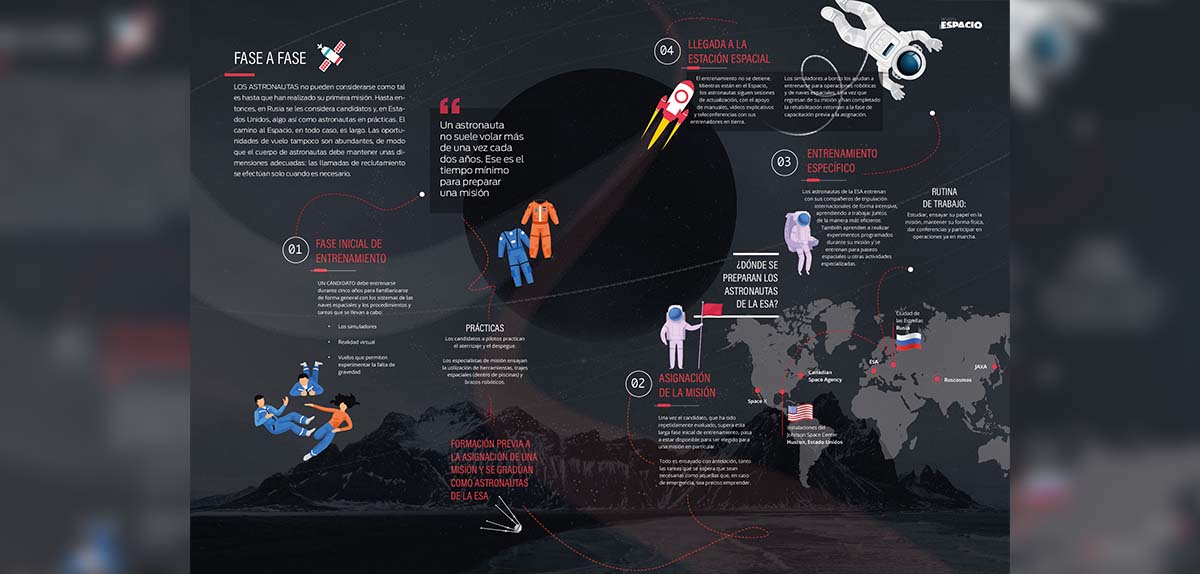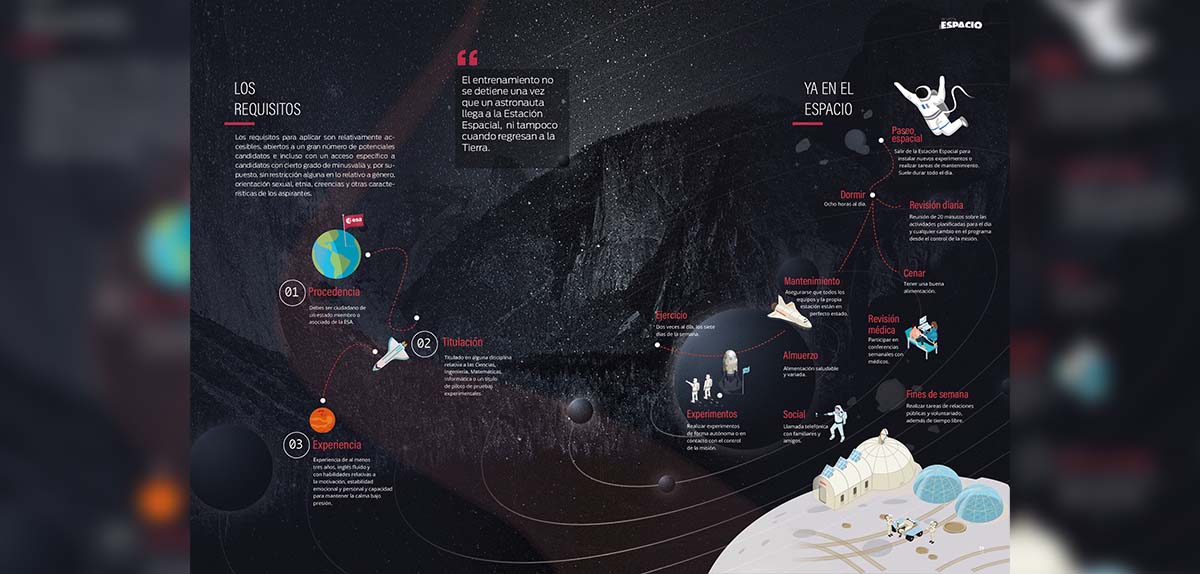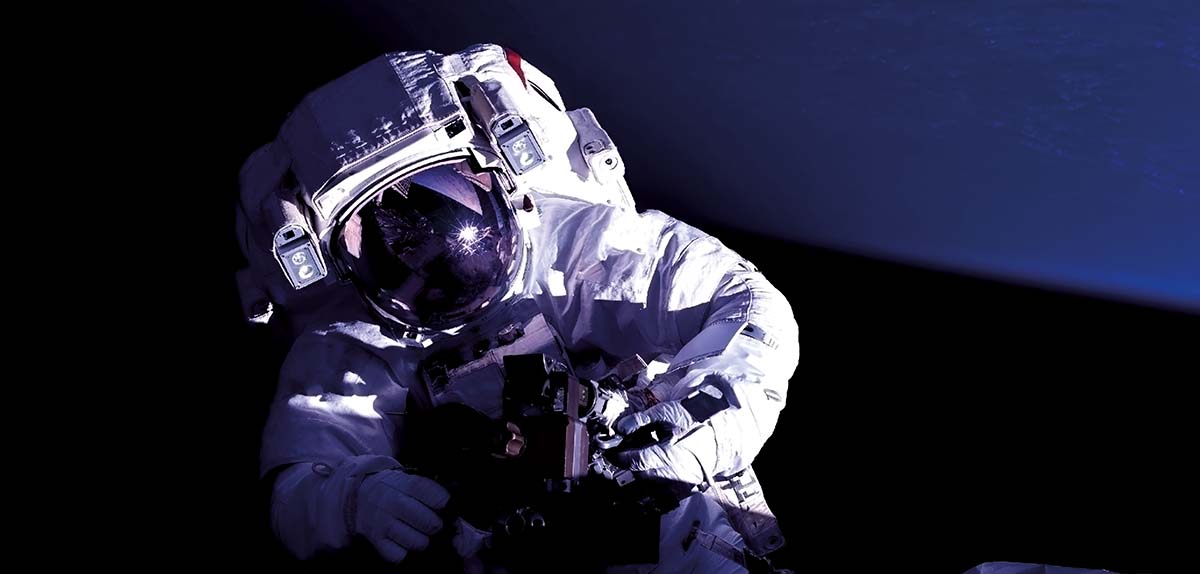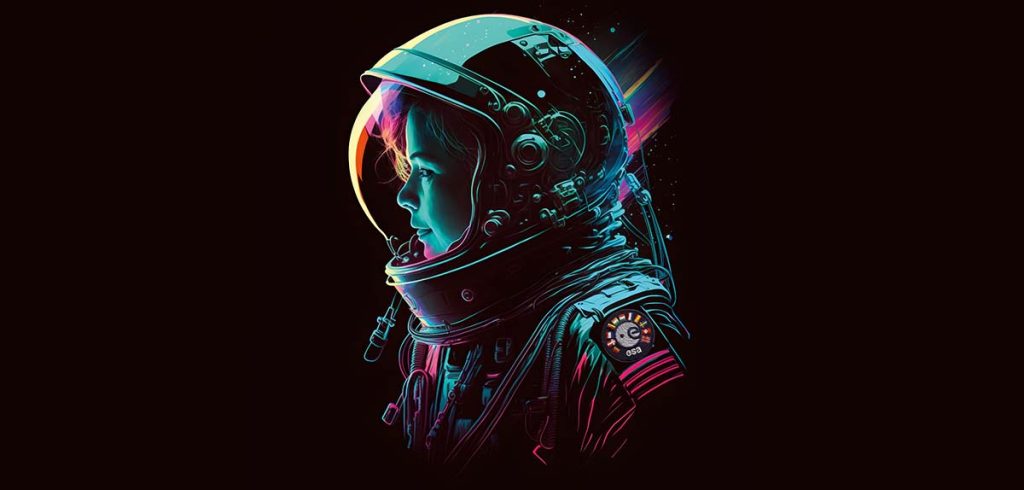During the last call by the European Space Agency (ESA) to recruit new astronauts, over 22,000 people from all ESA member states and cooperating states applied. In the previous recruitment call by the Agency in 2008, the number of candidates was less than half. And this is because, while travelling to space is still a dream for many boys and girls, it is a dream that seems more accessible with each passing day.
For the first few astronauts, flying aboard a space vehicle required not only an intensive training, but also conditions that made the spacefarers seem more like supermen”
¿Es esto cierto?
¿Estamos formando nuevas generaciones más cualificadas para viajar fuera de nuestro planeta? ¿O es que la tecnología, con sus avances, facilita el acceso al Espacio?
As told in the book ‘Un Paseo por el Espacio’, “for the first astronauts, flying aboard a space vehicle required not only an intensive training, but also conditions that made the spacefarers seem more like supermen. Well-trained both physically and intellectually, they had to be balanced persons, capable of reacting in the face of adversity, and willing to sacrifice a significant part of their personal and family life in favor of the ultimate goals. This is one of the reasons why the first few spacefarers, both American and Soviet, were selected out of the many groups of test pilots that existed in the fifties.”
Thanks to technological advancement, the physical requirements are not as crucial as they used to be, and the latest astronaut selection process is proof of this: not only because of the great number of applicants from different professional backgrounds, but also due to the inclusion, for the first time, of an astronaut with a physical disability.

An astronaut does not usually fly more than once every two years. That is the minimum time required to prepare a mission"
As stated by ESA Director General Josef Aschbacher in 2021 in regard to the astronaut selection process: “In the next few years we will be looking for a wide range of space professionals, so I encourage everyone to take a look at these opportunities in the ESA website’s careers page.”
This has not always been the case. The report about astronauts in ‘Un Paseo por el Espacio’ documents how, in the United States, there are pilots “that will fly the spaceship” and mission specialists, “trained to perform specific tasks in the vehicle, such as experiments and extravehicular activities.” Becoming an astronaut pilot requires a university degree and one thousand flight hours in jet aircraft. Many of them are military. In addition, they must pass a physical fitness test similar to the one undergone by aircraft pilots. Among others, some limitations include the height, sight and blood pressure.
On the other hand, mission specialists do not require flight experience and their physical conditions are not as stringent. As for the age, considering the long training period (of at least five years), the recommended age limit is 38.”

Training does not stop once the astronaut arrives at the Space Station, or once they get back to Earth"
The same chapter in the book tells how there were cases of exceptional performance: “Astronauts who have flown being over 60 years of age and others who have broken records: Valeri Poliakov accrued almost 438 days in a single mission, Sergei Krikalev logged a total of 803 days in space (across six trips) and Franklin Chang-Díaz and Jerry Ross flew seven times each.”
Among the more veteran astronauts, Paolo Nespoli stands out from the rest for returning to space at 60 years of age and staying for 139 days. And, more recently, the mythical aviatrix Wally Funk became the oldest person to travel to space at 82.
The evolution of ESA
Established in 1975, esa has 22 member states as cooperates with many others. Its mission involves the exploration and peaceful use of space to the benefit of humanity and, in particular, the preservation of planet earth.
In 1977, ESA took its first steps in crewed space flights by holding its first astronaut selection. This event was the beginning of over four decades of successes, with missions ranging from the first flight of Spacelab in 1983 to flights and stays aboard the International Space Station (ISS).
In November of 2019, the Space 19+ ESA Ministerial Council analyzed Europe’s position in space and confirmed its commitment to space exploration and, among other great challenges, included the landing on the lunar surface by a European astronaut by 2030 and the European participation in a human mission to Mars.
Its mission involves the exploration and peaceful use of space to the benefit of humanity and, in particular, the preservation of planet Earth"
In November last year, the European Space Agency selected 17 astronaut candidates among over 22,500 applications received from all member states—in total, 5 career astronauts, 11 reserve astronauts and one astronaut with a disability.

While flying to space is still an unattainable dream from many of us, the fact is that, as the space industry advances, options that never existed before such as space tourism are now opening up—though, for now, only available to millionaires—and there are many companies whose goal or purpose is to take humans to space in no small numbers. Will we really be able to see human civilization inhabiting other planets in the 21st century? There is no doubt that it will be an endeavor worth witnessing.





